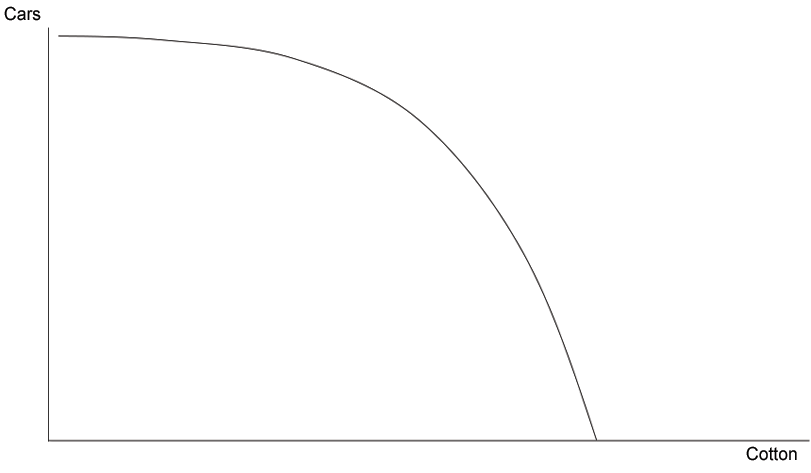The key learning point is the difference between the movement along a PPF and a shift in the PPF itself.
High yield from India's GM crops

Source URL: 'BBC News article'
Cotton crops in India that were genetically modified to resist insects have produced dramatically increased yields.
This study may be especially promising for small-scale, low-income farmers in developing countries, it is claimed.
There was an average improvement in yield of between 80% and 90%.
The authors say the results are transferable to other parts of the world and to food crops which sustain similar types of pest damage.
However, in spite of these benefits, there has been a strong lobby against genetic modification in India.
Environmentalists are concerned about the damage GM pollen could do to crop diversity if it "contaminates" the 600 or so natural varieties growing in India.
They also say that in the long term, any gains in yield from GM cotton would undoubtedly be lost as the insects developed resistance.
The probable effects of the use of GM cotton in India
